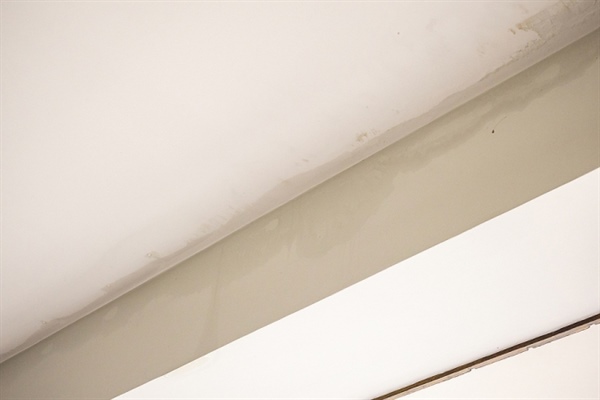Commercial Mitigation: What to Know About Water Damage

Whether you are dealing with flooding or a busted pipe, water incidents are a disheartening and stressful experience for any business owner. Preventing further damage is known as water mitigation, which requires strict actions or measures to decrease the level of impact caused by the water.
Restoration Network is your local restoration expert, and we are here with a few things to know about water damage and how to begin the clean-up process.
Causes of Water Damage
Water damage occurs for multiple reasons and can occur at any time due to the following:
Water damage also has different categories to assess the level of damage from level 1 with clean water to level 3 with black water from sewage or unsanitary sources. Each category requires different clean-up levels, so locating where the water came from is critical.
The Water Mitigation Steps
Successful mitigation means decreasing the damages, and preparation is required. Clean-up includes the following:
Step 1. Finding the Water Source
If the leak is apparent, shut-off valves are generally inside cabinets or under a sink. However, if it's unclear, turn the water off at the meter, typically found near the street under an iron lid. If you're in a scenario where the water is coming from a damaged roof, this can be more difficult to contain, and you will need to call for professional services right away.
Step 2. Remove the Water
A sump pump is the quickest method to get standing water out of your building, and if you have an industrial-sized dehumidifier, get it set up immediately.
Step 3. Call a Mitigation Company
A water mitigation specialist will be your biggest adversary in ensuring the clean-up process goes as smoothly as possible. Even if you have removed the water and have a dehumidifier, you need to get an assessment because undried areas can develop mold and mildew quickly.
While there's no way to tell how long it will take for the area to dry out or how much of your products or items will need to be replaced, having thorough documentation will help assist your insurance company so they understand everything that's involved in the process.
Step 4. Contact Your Insurance Company
The next step is to call your insurance company, and if you have coverage in place, they will expect you to:
-
Shut off the water
-
Dry out the space
-
Cover any roof leaks
-
Work with a specialist
While every policy is different, they will generally only cover the damage if the water was discharged suddenly, is storm-related, is accidental overflow, or is backed up from a sewer.
Step 5. Clean-Up Process
Preparing for the mitigation equipment may require the removal of areas of the building, including flooring, drywall, baseboards, and ceiling portions, depending on the extent of the damage.
Some floorboards may also have to be removed to help with airflow maximization, and once the area has been prepared, the equipment can be brought in. From there, a standard clean-up process typically consists of all of the following:
-
Industrial dehumidifiers remove excess humidity and moisture.
-
Air scrubbers help filter contaminants like mildew or mold spores.
-
High-velocity air movers and dryers to remove moisture from harder-to-reach areas.
-
Thermal imaging cameras help assess if the water is drying and how it's progressing.
-
Atmospheric readers for relative humidity and temperature.
Once all the equipment is placed, it will be time to dry out the area, and the meters listed above will help guide the process to see if any other surfaces need more work. Additionally, because harmful organisms can grow in space if left untreated, it is recommended to spray an antimicrobial agent to help ensure a thorough restoration.
Water Damage Prevention Tips
It's always best to have prevention methods in place, so here are a few of the measures we recommend you take to help reduce some of the risk of water damage in the future.
Keep Your Pipes Protected
Your pipes can take enormous stress from wear and tear to freezing temperatures throughout the year. Having regular inspections and ensuring you always have an alternative power source to prevent them from freezing and bursting are just small steps to add to prevent large losses.
Inspect Your Roof
Minnesota is notorious for getting massive snowstorms, so make sure that your roof has the appropriate load-bearing capacity. If you've experienced any recent storms, inspect the system to ensure there's no damage that could cause water damage inside your building.
Have a Plan
Always have a plan for worst-case scenarios because knowing what steps to take can help prepare you. Acting quickly, knowing where shut-off valves are, and working with an expert in damage mitigation can reduce some risks, keep your employees safer, and minimize how long your business will be down.
Restoration Network: Your Water Mitigation and Restoration Experts
Water restoration can be a time-consuming and stressful experience, so it's recommended to work with an expert to help make the process easier. That’s why Restoration Network is here to help! No matter the size of the project, we believe in providing trustworthy and honest services, from soot clean-up to fire damage repair in Minnesota.
Our team is here with 24/7 emergency services, and we offer insurance claims assistance, so message us online or call us at 612-564-0202 today.